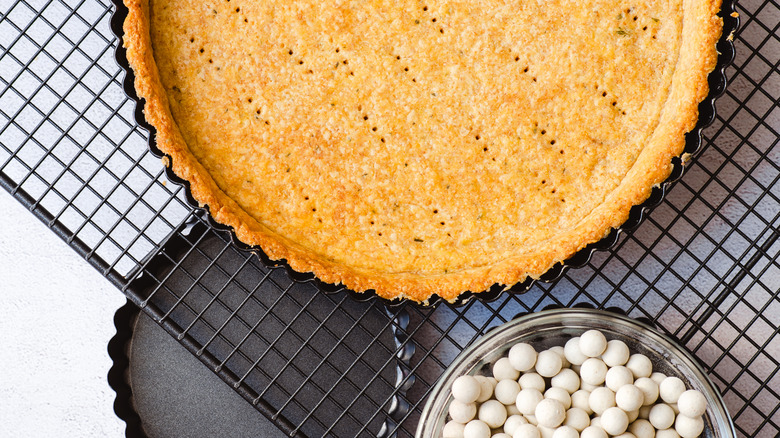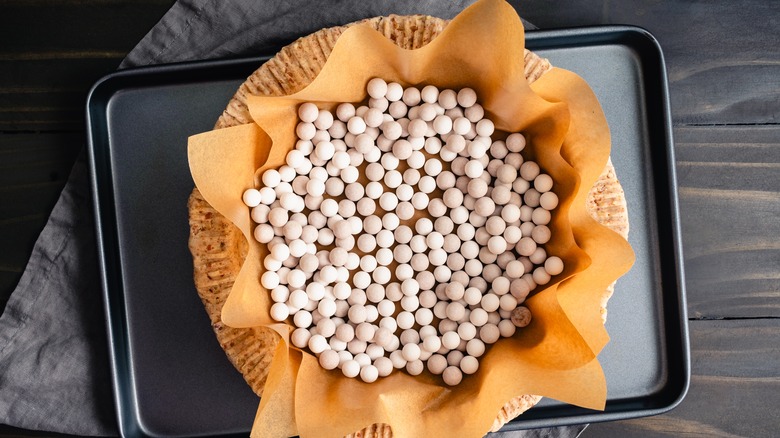The Simplest Way To Blind Bake A Pie Crust, For The Uninitiated
We may receive a commission on purchases made from links.
There's a reason brand-new bakers don't usually start with pie. From stodgy dough to soggy bottoms, there are plenty of common pie crust mistakes and pitfalls lying in wait for the uninitiated. One of the most common stumbling blocks? Blind baking. Blind baking doesn't mean turning on the oven and turning away, or blindly following your recipe's bake time — it actually just means pre-baking your crust before adding any filling. If the bottoms and sides haven't had a chance to firm up before adding your moist apple pie filling, for instance, you'll have a hard time baking your pie crust to crispy perfection without overcooking your filling. Blind baking is also a particularly crucial step when your pie filling is no-bake, like in the case of French silk pie.
But some recipes, trusting your pastry expertise, will simply prompt you to blind bake your crust for 20 minutes and consider no further explanation necessary. So what's a new-to-pie baking novice to do? Saura Kline, pastry chef at Local Jones (@localjones on Instagram) in Denver, Colorado, has the answer. When speaking exclusively to Chowhound, Kline shared her super simple approach to blind baking. "The best method is to get your pie dough rolled out, chilled very cold, then place parchment paper inside the pie and fill it up with dry rice or beans, or a combination of both," she says. The goal of blind baking is to let the bottom and sides of your pie crust turn lightly golden. But without the weight of the filling, the crust will puff up dramatically and become hard to work with. That's where the rice and beans come in.
How to blind bake your pie crust
After rolling out your dough and fitting it to the contours of your pie pan, you'll want to dock your dough, or prick the bottoms and sides several times with the tines of a fork, to release moisture as your crust bakes. As Saura Kline mentions, adding a piece of parchment paper to cover the bottom and sides of your crust before putting anything on top of it is essential. Without it, your rice, beans, or pie weights will start baking into your crust and you'll have to painstakingly remove them piece by piece, leaving their bumpy impressions behind. Plus, parchment paper makes it easy to lift out your weights when your blind bake has finished.
Speaking of pie weights, products like purpose-built Mrs. Anderson's ceramic baking beads can be used over and over again when baking pies, but Kline says you don't need them if you don't have them. "I would suggest not wasting your money on pie weights," she says. Rice, beans, lentils, or any dry pantry staple will do the trick. Just pour them on top of the parchment paper until they just reach the upper lip of your pie pan. A few minutes in the oven won't hurt your dried goods, so you're free to store them again after baking and use them as normal. Once blind baked, your perfectly prepped pie crust is ready to stand up to your favorite pie fillings.

